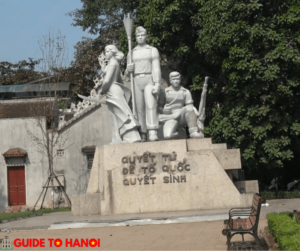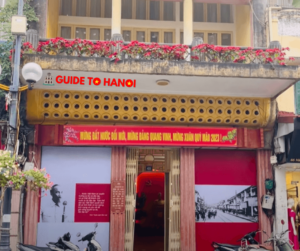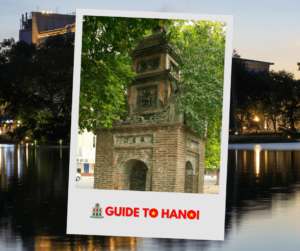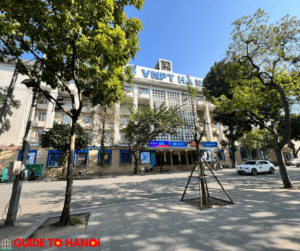Temple of Literature
The Temple of Literature, located in the heart of Hanoi, Vietnam, is a cultural and historical gem that dates back to the 11th century.
It was initially built as a Confucian temple and became Vietnam’s first national university.
Today, the temple complex is a testament to the country’s rich intellectual and educational history.
This guide will take you on a journey through the various aspects of the Temple of Literature, providing insights into its history, architecture, and significance.
Historical Background: Origins and Construction
The Temple of Literature, also known as Van Mieu, was constructed in 1070 during the reign of King Ly Thanh Tong.
It was built to honor Confucius and serve as a center for learning and education.
The temple complex underwent expansions and renovations over the centuries, reflecting Vietnam’s evolving cultural and historical landscape.
Architectural Marvels: Layout and Design
The temple complex is a harmonious blend of traditional Vietnamese architecture and Confucian principles.
The layout is organized into five courtyards, each with its significance.
The structures within the complex, including pavilions, halls, and gates, showcase intricate carvings, well-preserved stone steles, and beautiful gardens, providing visitors with a glimpse into Vietnam’s architectural heritage.
The Imperial Academy: Vietnam’s First National University
1076, King Ly Nhan Tong established the Quoc Tu Giam (Imperial Academy) within the Temple of Literature, making it the country’s first national university.
This institution played a crucial role in shaping Vietnam’s intellectual elite for centuries.
The stone steles that list the names of successful scholars are a remarkable feature, offering a tangible connection to the past.
Confucian Traditions and Ceremonies: Rituals and Practices
The Temple of Literature remains a site for Confucian worship and traditional ceremonies.
Visitors can witness rituals performed by scholars and students, paying homage to Confucius and seeking blessings for academic success.
These ceremonies provide a glimpse into the enduring influence of Confucianism on Vietnamese culture.
Literary Legacy: Steles and Inscriptions
One of the most captivating features of the Temple of Literature is the collection of stelae inscribed with the names of scholars who passed the royal exams.
These stelae, known as the “Stelae of Doctors,” are housed in the fourth courtyard.
They serve as an invaluable historical record, preserving the names and achievements of scholars from different periods.
Conclusion
The Temple of Literature in Hanoi is a testament to Vietnam’s rich cultural and educational history.
From its origins as a Confucian temple to its role as the country’s first national university, the temple complex offers a captivating journey through centuries of intellectual and architectural heritage.
Visiting this iconic site provides a unique opportunity to connect with Vietnam’s past and appreciate the enduring legacy of Confucian traditions!
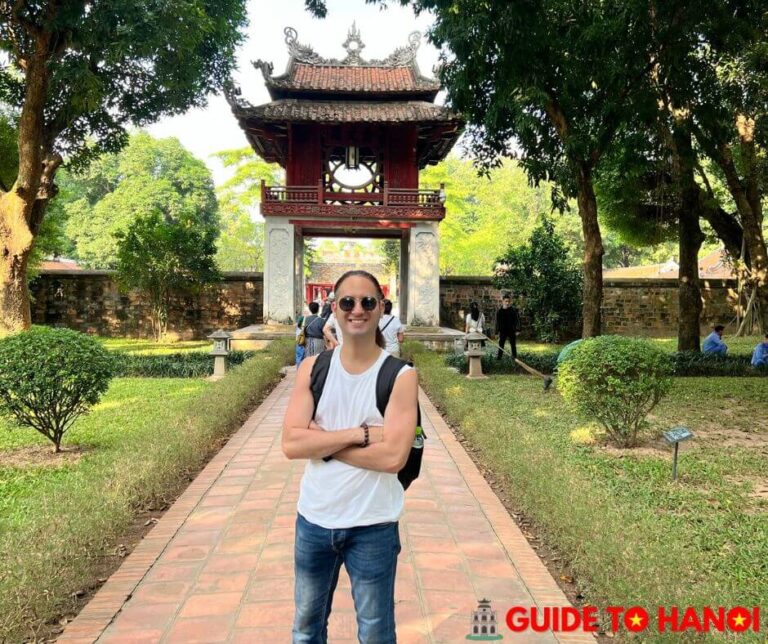
| Aspect | Details |
|---|---|
| Location | Hanoi, Vietnam |
| Built | 1070 (original construction) |
| Type | Confucian Temple, Former National University |
| Architectural Style | Traditional Vietnamese with Confucian influence |
| Notable Features | Five courtyards, stone stelae, pavilions, gardens |
| Function | Originally a temple, later a national university |
| Current Status | The best-known landmark of Hanoi, the Khue Van Cac inside, is the city’s symbol. |
| Historical Significance | Vietnam’s first national university, cultural heritage site |
| Architectural Highlights | Intricate carvings, well-preserved structures, symbolic layout |
| Rituals and Ceremonies | Confucian worship, academic blessing ceremonies |
| Noteworthy Collections | “Stelae of Doctors” listing successful scholars |
| Operating Hours | Daily 8 am-5 pm |
| Admission Fee | 30,000 VND |
| Accessibility | Wheelchair-friendly paths available |
| Visitor Tips | Respectful attire, observe ceremony etiquette, guided tours available |
| Nearby Attractions | Ho Chi Minh Mausoleum, One Pillar Pagoda |
Is the Temple of Literature worth visiting?
The Temple of Literature is worth visiting for its historical significance, architectural beauty, and cultural richness.
Is The Temple of Literature free?
No, there is an admission fee to enter the Temple of Literature.
How long do you need at the Temple of Literature?
Plan to spend 1-2 hours exploring the Temple of Literature to appreciate its architecture, history, and cultural significance fully.
Why is the Temple of Literature famous?
The Temple of Literature is famous for being Vietnam’s first national university and a center for Confucian worship, reflecting the country’s rich intellectual and educational history.
What is inside of the Temple of Literature?
The Temple of Literature has five courtyards, stone stelae, pavilions, gardens, and historical artifacts. It also houses the “Stelae of Doctors,” listing successful scholars.
How much does it cost to go to the Temple of Literature in Hanoi?
The admission cost to the Temple of Literature is 30,000 VND per person.
Why is it called the Temple of Literature?
The Temple of Literature is called so because it was built to honor Confucius and later became a center for learning and education, evolving into Vietnam’s first national university.
How old is the Temple of Literature in Hanoi?
The Temple of Literature in Hanoi is over 950 years old, with its construction dating back to 1070 during the reign of King Ly Thanh Tong.
What do you wear to the Temple of Literature?
It’s recommended to wear modest and respectful attire when visiting the Temple of Literature, covering shoulders and knees as a sign of cultural respect.
Address:
- 58 P. Quốc Tử Giám, Văn Miếu, Đống Đa, Hà Nội
Contact:
Opening Hours:
- Daily: 8:00–17:00
Entrance Fee:
- 30,000 VND
- Book a tour here

